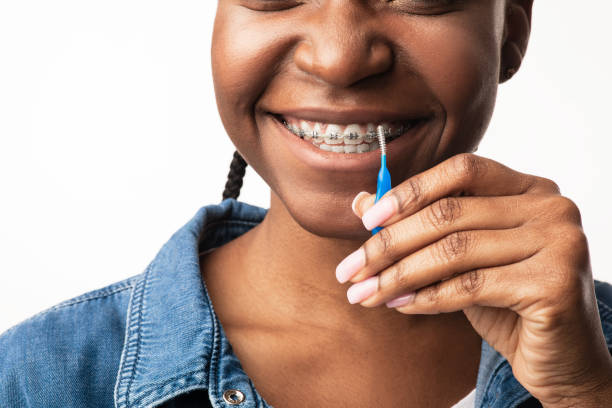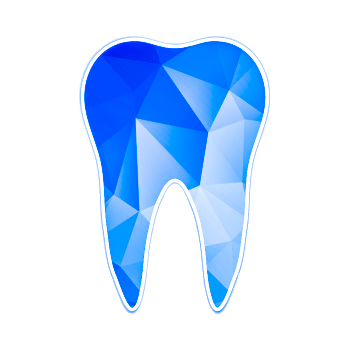Types of Braces Available in Nairobi
Braces have become one of the most popular options when it comes to orthodontic treatments. They are a perfect solution, redefining facial appearance and enhancing good oral health. Choosing the right type of braces is one of the most important steps in your orthodontic journey. Understanding the differences between the different types of braces can help you make an informed decision.
1. Metal braces
Traditional metal braces are the most common and widely used orthodontic treatment. Metal braces consist of stainless-steel brackets that are attached to the front of your teeth using a special dental adhesive. These brackets are connected by a thin archwire, which your orthodontist periodically adjusts to apply gentle pressure, gradually guiding your teeth into proper alignment. They also have ligatures which are small elastic bands or metal ties that hold the wire in place. These are often colourful, especially for kids and teens.
Pros:
- Highly effective for treating even the most complex dental issues.
- Generally the most affordable option.
- Durable and rarely breaks.
- Customizable with coloured bands (fun for kids and teens).
Cons:
- Most visible type of braces.
- May cause initial irritation to the cheeks and lips.
- Require regular tightening visits.
Cost in Nairobi
Metal braces are the cheapest and most affordable type of braces. On average, they have an estimated cost of Ksh.100,000 – Ksh.150,000, depending on the clinic and complexity of treatment.
Metal braces are best for
- Children and teenagers.
- Adults on a budget.
- Patients with more severe orthodontic issues.

2. Ceramic braces
Ceramic braces are a type of orthodontic appliance used to straighten and align teeth, similar to traditional metal braces—but with one key difference. They use clear or tooth-coloured ceramic brackets instead of metal ones, making them less noticeable.
Some of the features of ceramic braces are:
- Aesthetics – The brackets blend in with your natural tooth colour, making them more discreet.
- Functionality – They work just like metal braces by applying continuous pressure to move teeth into the desired position.
- Materials – Made from composite materials that are strong but more brittle than metal.
- Wires – Can be metal or tooth-coloured to maintain a low profile.
Pros:
- Less visible than metal braces.
- Just as effective for many types of dental corrections.
- Suitable for teens and adults concerned about aesthetics.
Cons:
- More fragile than metal braces — brackets can chip or crack.
- Can stain if not cared for properly (especially around the elastics).
- Typically more expensive than metal braces.
Cost in Nairobi:
Ceramic braces are also some of the most affordable, though slightly more expensive than metallic braces. They have an estimated cost of Ksh.150,000 – Ksh.250,000 depending on the clinic and duration of treatment.
3. Lingual Braces
Lingual braces are a type of orthodontic treatment that, like metal and ceramic braces, use brackets and wires to move teeth—but they’re placed on the inside (tongue-facing side) of your teeth instead of the front, making them completely hidden when you smile.
Key features of the lingual braces are
- Invisibility – Positioned behind the teeth, so they’re virtually undetectable from the outside.
- Custom-fit – Often custom-made for each patient to match the contours of the back of the teeth.
- Same effectiveness – They can treat most of the same dental issues as traditional braces.
Pros:
- Completely hidden from view.
- Effective for most types of misalignment.
- Ideal for people in professional or public-facing roles.
Cons:
- More expensive due to the custom fitting and complexity.
- May affect speech during the initial adjustment period.
- Harder to clean and maintain.
- May cause more tongue irritation than other types.
Cost in Nairobi
Lingual braces are expensive, as they have an average cost of Ksh.200,000 – Ksh.300,000 or more depending on complexity and orthodontist expertise.
Lingual braces are most suitable for
- Adults and professionals who are concerned about appearance.
- Patients looking for an invisible, fixed option.
- People who don’t mind a longer adjustment period.
4. Clear Aligners (Invisalign or Similar Brands)
Clear aligners are a modern orthodontic treatment option that straightens teeth using a series of removable, transparent plastic trays custom-made to fit your mouth. One wears the trays for about 1-2 weeks and is to be worn for about 20-22 hours a day. Each tray applies pressure that gradually moves your teeth. The most well-known brand of clear aligners is Invisalign.
Some of the key features of clear aligners are
- Virtually invisible when worn
- Removable, allowing you to eat and clean your teeth more easily
- Custom-made using 3D scans or moulds of your teeth
Pros:
- Virtually invisible.
- Removable — easier to eat, drink, and maintain oral hygiene.
- More comfortable (no wires or brackets).
- Fewer orthodontic visits are needed.
Cons:
- More expensive than traditional braces.
- Requires discipline — must be worn 20–22 hours a day.
- May not be suitable for very complex dental issues.
- Can be lost or damaged if not handled carefully.
Cost in Nairobi:
Clear aligners are some of the most expensive orthodontic treatments. They have an average cost of between Ksh.250,000 – Ksh.350,000 + depending on the brand and treatment complexity.
Clear aligners are most suited for
- Adults and teens with mild to moderate alignment issues.
- People seeking a flexible, discreet treatment.
- Those who can commit to wearing them consistently.

Frequently Asked Questions about braces.
Choosing braces is a big decision, and it’s natural to have questions. Whether you’re worried about cost, appearance, or the treatment process itself, here are answers to some of the most commonly asked questions by patients considering braces in Nairobi.
1. Can I switch from metal braces to clear aligners midway through treatment?
In some cases, yes — but it depends on your progress and the recommendation of your orthodontist. If your teeth have already undergone significant movement with metal braces, transitioning to clear aligners may be possible for the remainder of your treatment. However, switching may extend your overall timeline and increase your cost, so it’s important to discuss this thoroughly during your check-up.
2. How long does orthodontic treatment usually take?
The average treatment duration ranges from 12 to 36 months, depending on:
- The type of braces used.
- The complexity of your dental misalignment.
- Your age and bone response to movement.
- How well you follow care instructions (e.g., wearing rubber bands or aligners properly).
3. Are braces painful?
Braces can cause discomfort — especially after initial fitting or during tightening visits — but they are not typically painful. Most patients describe the sensation as pressure or soreness, especially in the first few days. Over-the-counter painkillers, soft foods, and orthodontic wax can help ease the discomfort during these periods.
4. Can braces affect my speech?
They can — but temporarily. Lingual braces and, occasionally, clear aligners may cause a mild lisp during the adjustment period. Your speech typically adapts within a few days to a couple of weeks. Practising reading aloud can help speed up this adjustment.
5. Will I need to wear a retainer after my braces come off?
Yes. A retainer is essential to maintain your new smile. Teeth naturally try to shift back to their original positions (a process called relapse) after braces are removed. Your orthodontist will prescribe either a fixed or removable retainer and advise how often to wear it — usually full-time at first, then gradually reducing to nighttime use.
6. Are there age limits for getting braces?
There is no upper age limit for getting braces. As long as your gums and jawbone are healthy, you can start treatment at any age. Many orthodontic patients in Nairobi are adults who either missed the opportunity as children or want to improve their smile later in life.
Final thoughts
Orthodontic treatment is a personal investment in your health and confidence. Braces offer a wide range of options to suit different lifestyles, needs, and budgets. The best way to determine which type of braces is right for you is to schedule a consultation with a licensed orthodontist. In Nairobi, the best specialists for braces are found at the Nairobi Sterling Dental Clinic. Our dentists will assess your teeth, discuss your goals, and recommend the most effective treatment plan for your unique case. Visit us at the Park Suites Building in Parklands and start your orthodontic journey with a braces fitting.

Leave a Reply